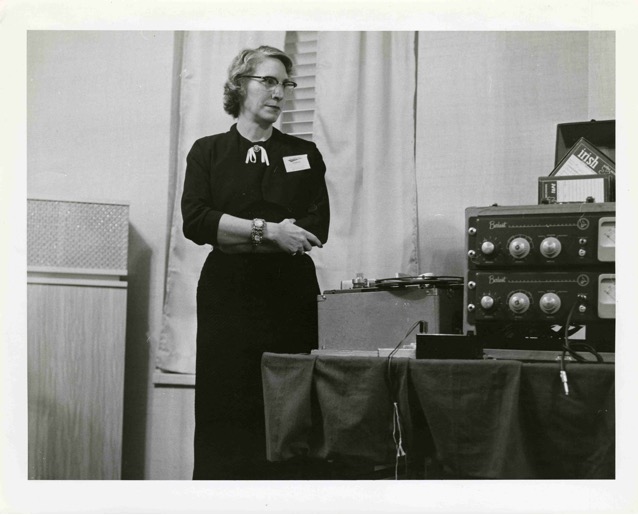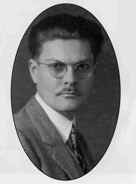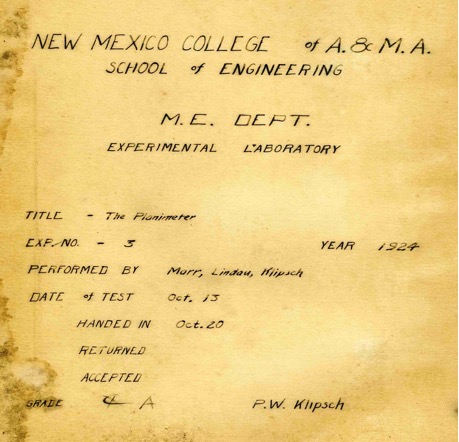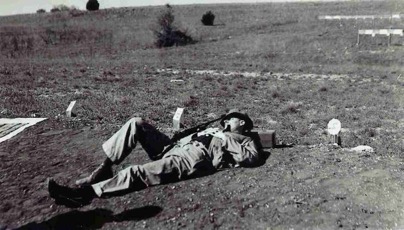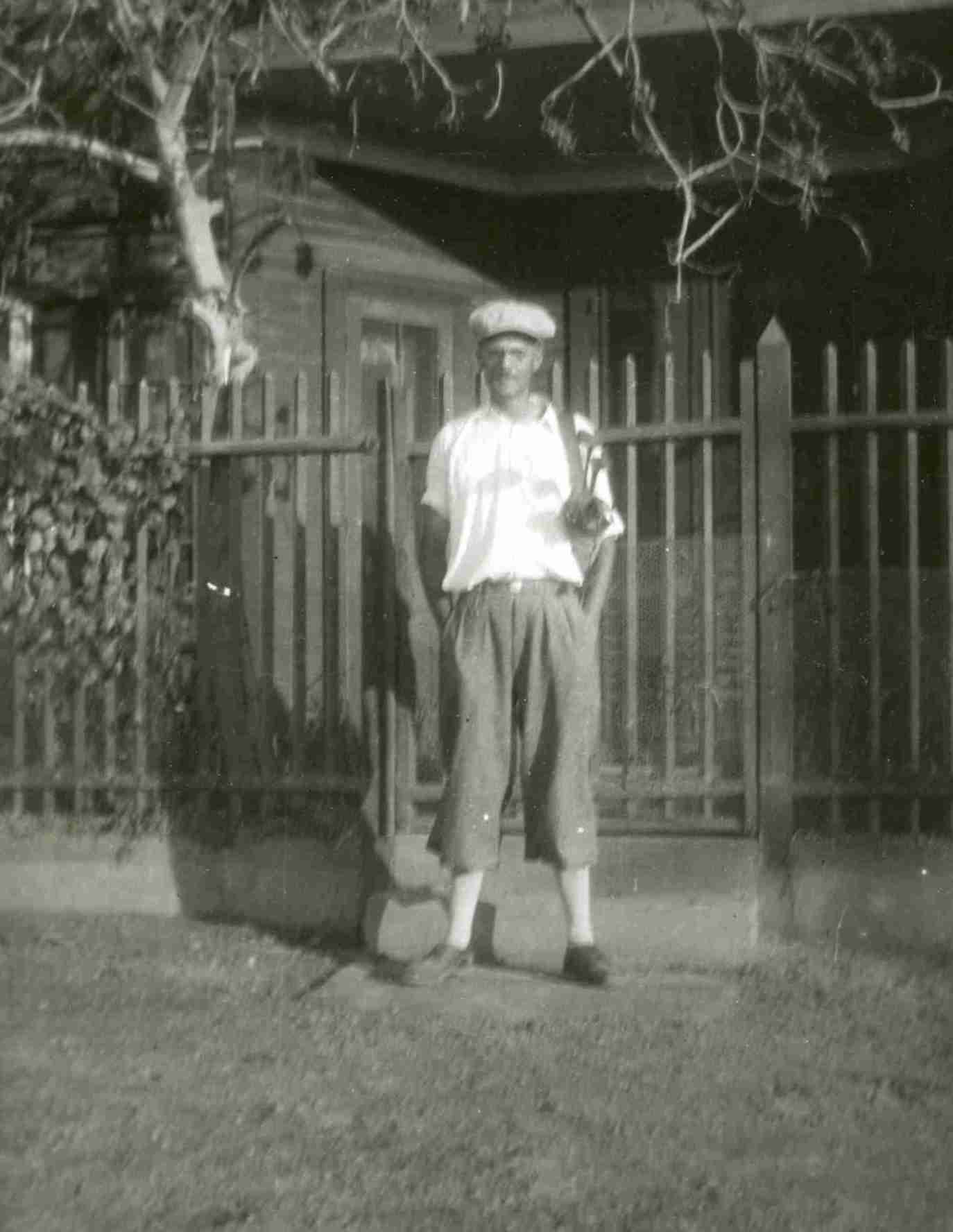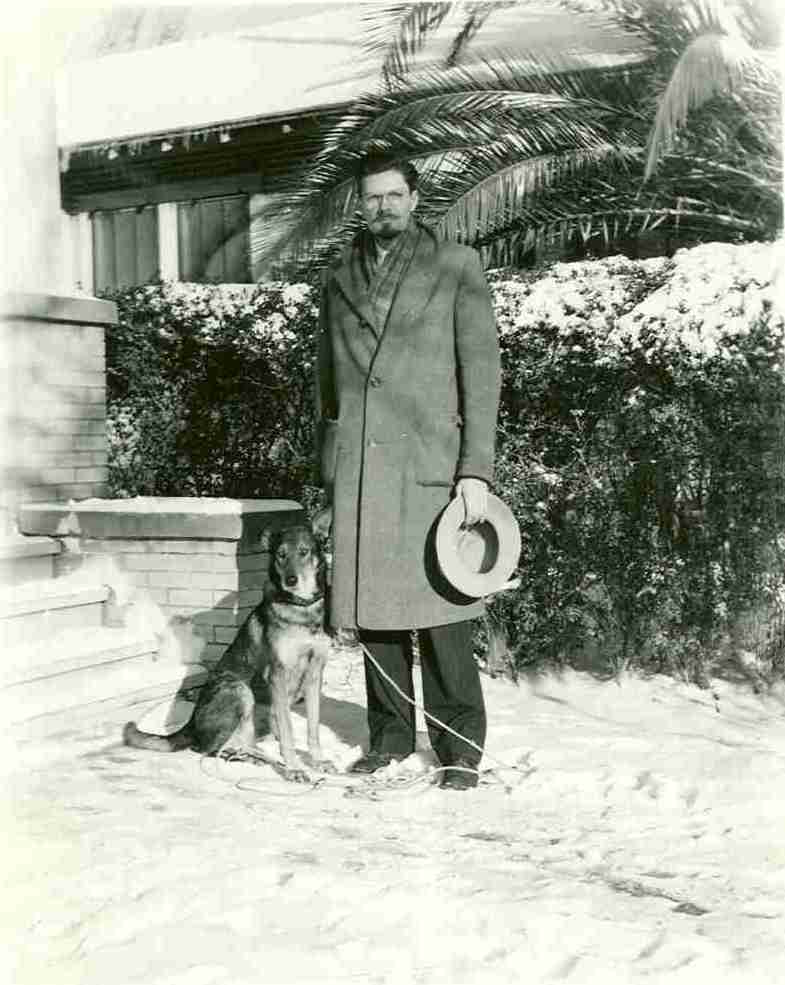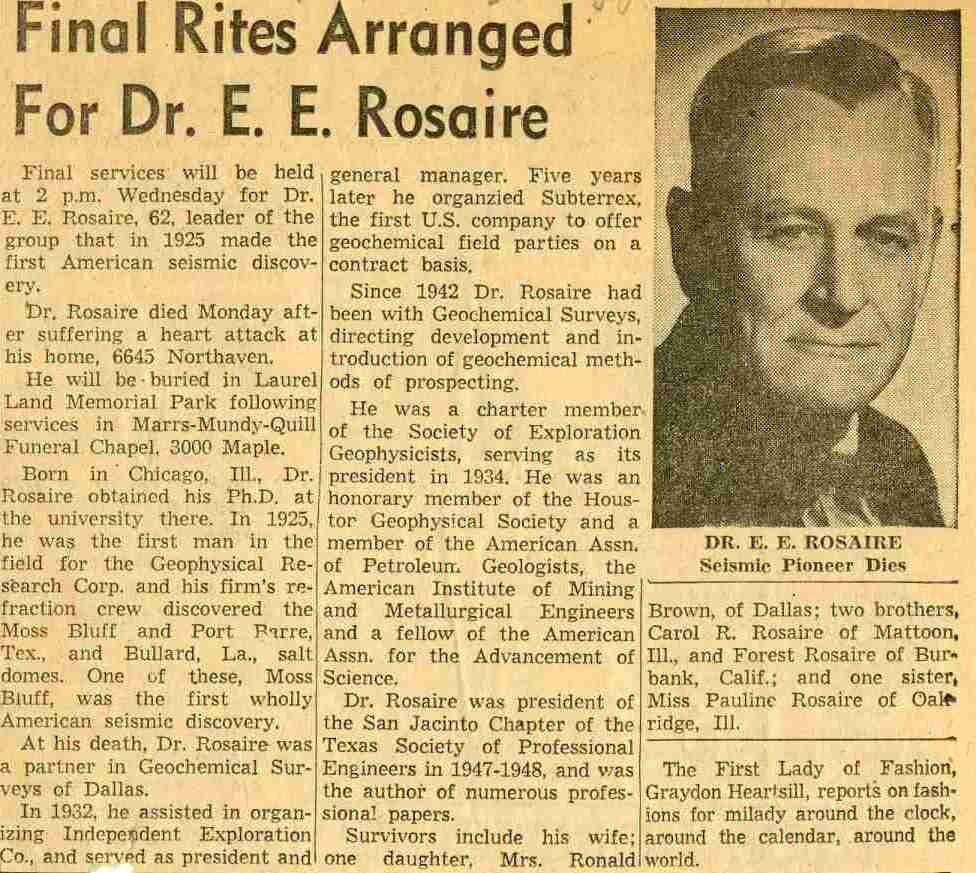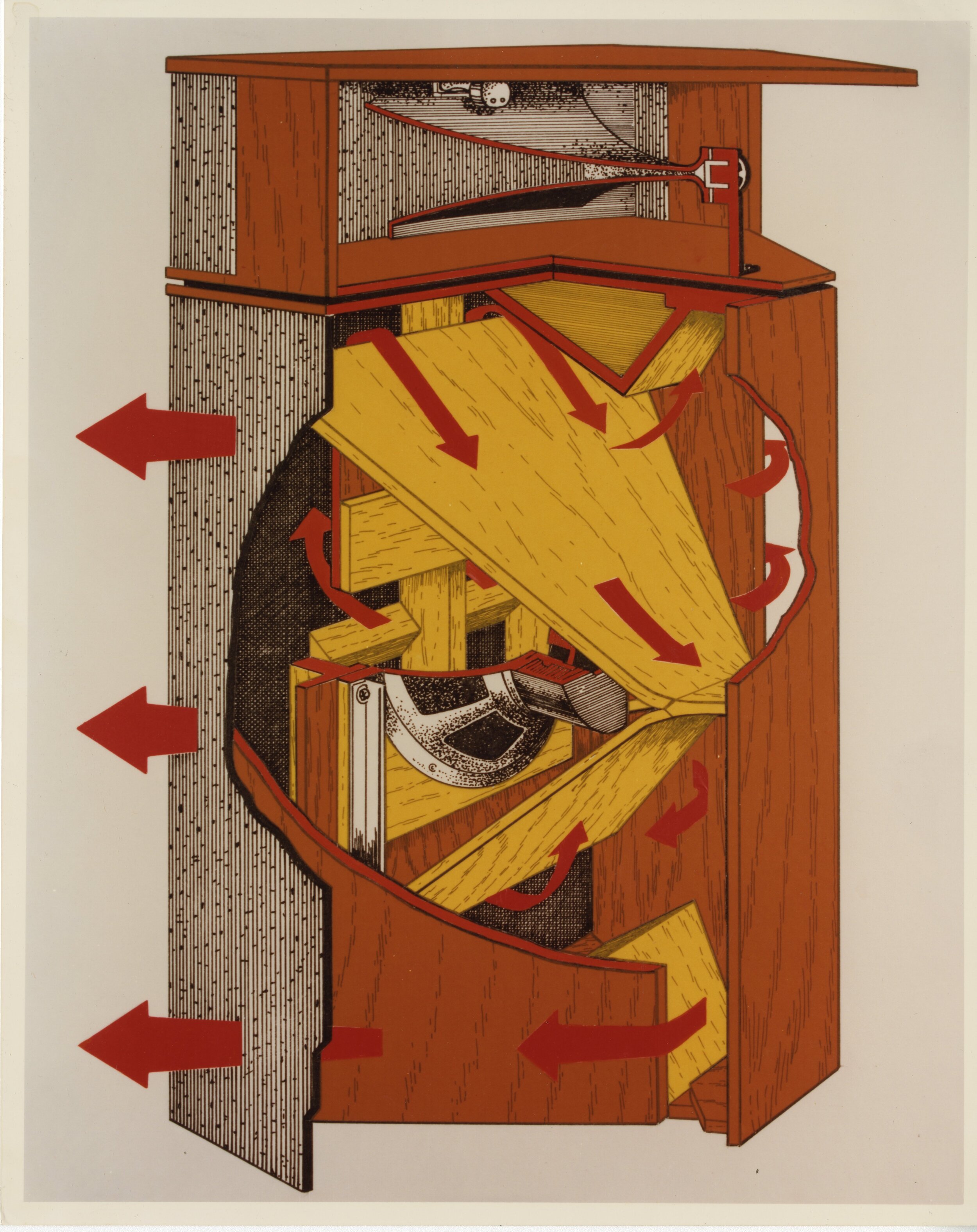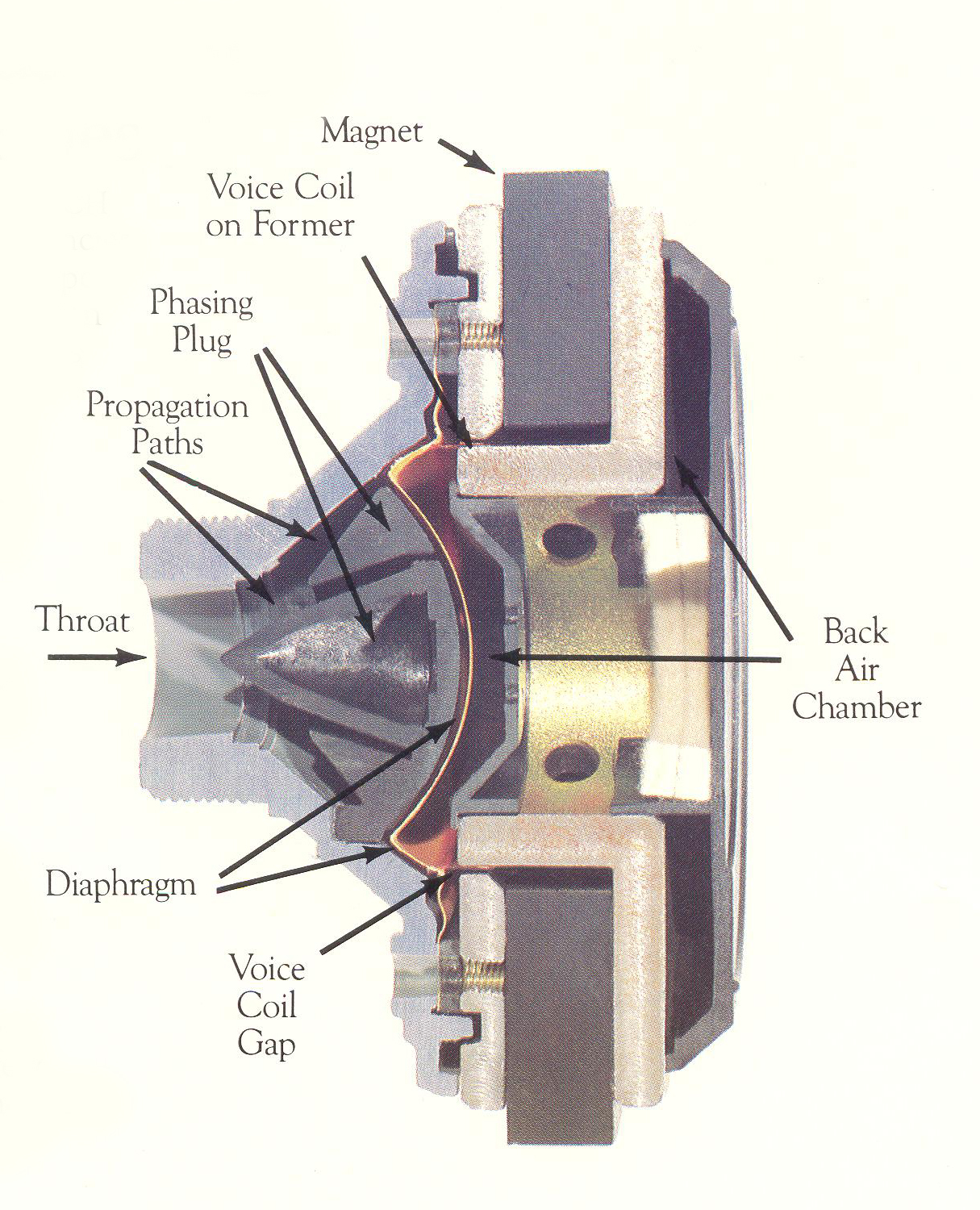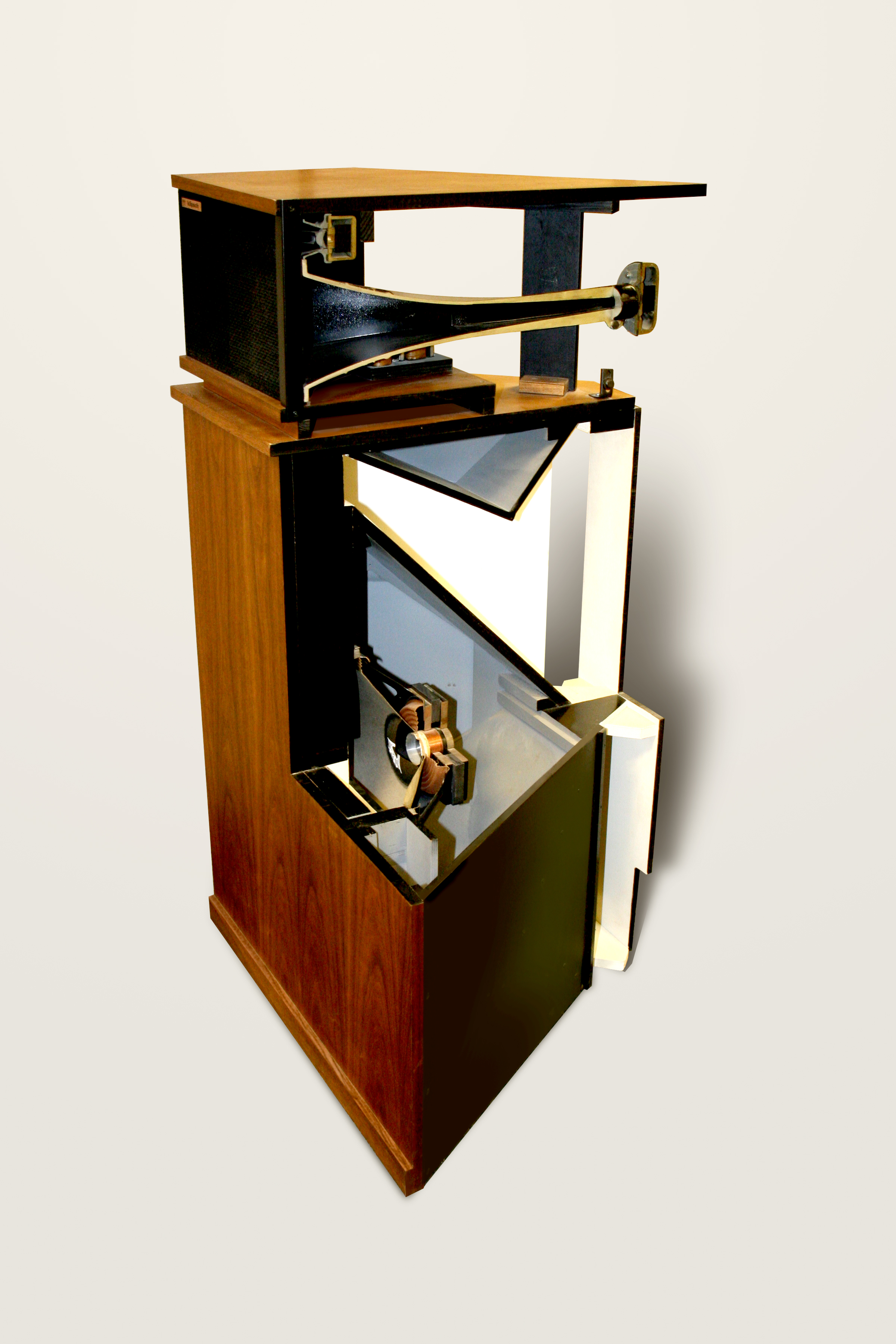Biography Of Paul Wilbur Klipsch
By Eva Belle Klipsch 560808
PROLOG 190612
In 1934 at the age of 30, Paul W. Klipsch received his graduate degree from Leland Stanford University. His plan was to enter the collegiate teaching field. His “bio” or “resume” published in the JAIEE in February 1934 read as follows:
Paul’s biography started strong, and continued to grow throughout his life. A book was written late in his life, but even that does not capture the breadth of his achievements.
In 1956 a “Mr. Merrill” made a request to Belle Klipsch for PWK’s biography*. Naturally PWK jumped in to assist her. One of the greatest treasures so far discovered in the PWK Archives are some carbon copies (remember those?) of the draft responses to that request. What follows is a unique glimpse into PWK’s history documented at that time. Paul was 52.
Again, the documents are drafts with “notes in the margins”, so to speak. Every effort has been made to replicate the layout, “unusual” capitalized letters, and “rough syntax” of the originals. A very few miss-spelled words have been corrected.
There is a wealth of information that has largely been lost to the public. We may be labeled as a bit sadistic, but the release will come in installments over the next year.
Stay tuned, and enjoy this enlightening view from the couple.
* KHMA is not aware of this coming to print, nor exactly who Mr. Merrill was. It is of great interest, and will be researched as time allows. If you can add to this story, please do.
PART 1
Vital Statistics: Born 9 March 1904, Elkhart, Indiana
Parents: Minna Eddy Klipsch and Oscar Klipsch
Childhood spent in Lafayette, Indiana, Silver City, New Mexico and Lordsburg, New Mexico.
Graduated from El Paso High School 1922.
Graduated from New Mexico Agriculture and Mechanical College, Mesilla Park, New Mexico 1926, majoring in E.E.
Went to work for General Electric Co. 1926
Went to Chile, South America, 1928
Married 8 December, 1928
Returned to United States September 1931.
Entered Leland Stanford University for graduate course 1932
Received Engineers Degree, two years of work, in 1934
Worked in Houston for oil prospecting companies, seismograph work, research, Patent work, 1934 to 1941.
Entered United States Army for active duty August 1941 as 2/lt.
Was returned to active reserve status Dec. 1945 as Major
During the War he was at Aberdeen, Jefferson, and Southwestern Proving Grounds
He now [1956] has rank of Lt. Col.
Took up residence in Hope, Arkansas in March 1946 where he still resides [1956]
Belongs to [1956] Presbyterian Church, Lodge Progress No. 812 in Tocopilla, Chile, Whitfield 239 in Hope, Ark., Scottish Rite, Scimitar Temple in Little Rock, and the Sojourners. Airplane Owners and Pilots Association, Institute of Radio Engineers, American Institute of Electrical Engineers, Acoustical Society of America, Tau Beta Pi, Sigma Xi, National Rifle Association, American Institute of Electrical Engineers, Acoustical Society of America, Tau Beta Pi, Sigma Xi, National Rifle Association,
PART 2
After his father’s death he and his mother moved to Lordsburg, New Mexico where she taught school and Paul joined the Boy Scouts. During this time Paul became interested in astronomy and worked in the summer at Lowell Observatory at Flagstaff, New Mexico [she meant Arizona]. He went with the group to Mexico and helped set up for an eclipse of the sun.
He and his mother also toured to Denver and Colorado Springs, visiting Pike’s Peak. So he had many occasions to observe railroads.
During his father’s life he taught Paul to shoot, a sport which Paul has followed and made contributions to the art. He does not care for hunting but likes target shooting, a highly competitive game.
After his mother had her degree the two moved to El Paso where she taught Spanish in the High School. Paul graduated from there in 1922. He was active in Boy Scout work in El Paso, playing his cornet in the band and doing all the things Boy Scouts do. In El Paso he built his first radio receiver and became a “Ham”. From that time on he has always has something in the radio line abuilding.
PART 3
Paul tells this on himself: He maintains that he graduated 101 in a class of 101 students. Then in college he “found” himself and was on the honor roll the four years in college. Boy makes good! He had a second hand car which he maintained himself, doing all engine repairs and maintenance. Along with all of this he played in the college band, again the cornet.
Upon graduation from New Mexico Agriculture and Mechanical College in 1926, Paul received his B.S. in Electrical Engineering, and his commission as a second lieutenant in the Reserves of the United States Army.
During college years, he was on the team that went to Camp Perry to shoot in the national Rifle competition.
PART 4
In 1926 he went to work at Schenectady, N.Y. for General Electric Company, at the magnificent sum of about $100 a month! He was in the Test Section there for a while, then was transferred to Erie, Pa. to help work on Electric Locomotives, which was along the line of his first “love”. These locomotives were to go to the Anglo-Chilean Consolidated Nitrate Company in Tocopilla, Chile. So Paul applied for the position with that company to maintain the locomotives which he received.
He signed the usual three year contract and in April 1, 1928 came to El Paso, Texas to visit his mother before leaving for South America. Because shortly after he came to his mother’s home, he saw a neighbor girl and fell in love at first sight. As usual He did not know what 1 April arrival (April Fool’s Day) had in store for him. He knew his own mind and with singleness of purpose convinced her to go to Chile with him.
He had only a few days in which to accomplish his mission. Parental interference caused him to leave the girl at home until he could be assured of quarters more adequate than a room in the bachelor’s quarters. Result, the wedding took place on 8 December 1928, on the Pacific Ocean off the coast of Chile just before midnight, with the Ship’s Orchestra playing the wedding marches and other proper music. The captain of the Santa Barbara, Grace Line, Captain Renault performed the marriage ceremony. (The Bride carried red roses, since nobody had thought of bridal flowers and all the dining room had to offer were the red roses.) So, as always with Mr. Klipsch, the “unusual” was already becoming a habit. Most of courtship was by mail.
PART 5
During the years in Chile, his hobbies included golf, 16 MM Movies, swimming. NOT gardening – except to measure the growth of the Kentucky Wonder climbing beans up the pole each 24 hours, and eating the garden products.
He joined the Lodge Progress No. 812 R.G.L. of Scotland in Antofagasta, Chile taking the degrees via [Uncompleted].
He and his wife returned with Lobo, Belgian Shepherd dog, and all belongings to the United States in September 1931 via tanker with passenger accommodations for 6, landing at San Pedro, Cal., going on to El Paso by train and learning enroute that the bank with Paul’s savings in it had closed. He did not worry too much as we could do nothing about it. (A philosophy he still uses, as “it saves ulcers”.)
PART 6
Back to Chile: He had his bride bring a trunk load of radio parts, and he built a shortwave receiving set and had a speaker in a box in the living room. We also had a portable record player. We used both. After he completed the radio receiver we got all the radio programs that were beamed to the Byrd Expedition at the South Pole from New York.
After visiting relatives in Texas and getting his reserve commission reinstated, he turned to “job hunting”, and ended up going “back to school”. On 1 January 1932 Paul, wife and Lobo arrived in Palo Alto, California. Paul registered for graduate work in Electrical Engineering. Most of his work was under Dr. Frederick M. Terman in Radio. It was here in the Radio Lab that one of his co-workers mentioned that “any speaker sounds better when placed in a corner”. However we never tried it in our house at that time. We had an old radio and some number of speakers and boxes to use with the radio. I believe this was the time we heard our first symphony orchestra, via radio out of San Francisco.
We had both heard many Band Concerts, live and on Radio. For years Paul’s favorite music was Band; now symphony became a first.
PART 7
Paul received his degree of Engineer from Leland Stanford in 1934. He says “This is an awkward one because you always have to explain it. It’s about half way between a Master’s and a Doctor’s.” He thought he wanted to teach, but Colleges and Universities had little money and had the pick of men with Doctor’s degrees. So Paul became an employee in the geophysical field in Houston. Here he worked for a seismographic exploration company and further increased his knowledge of sound waves. However for several years we did not even have a radio. We got our music by attending the Houston Symphony.
Here is where that April Fool’s Day of 1928 catches up with Mrs. Klipsch. Finally I urged that we get a radio, as I had to visit a neighbor to hear “all about Wallis Warfield Simpson” and her “love affair” with the King of England. So we purchased one. Then we listened to it. Paul was unhappy with the reproduction of music. We just were not getting all that we should hear. He picked out a speaker that he believed was a good wide range reproducer (words new to me at that time) but “it was too expensive”!
PART 8
At about this time, we heard Dr. Perrine of Bell Labs give a talk and demonstration of music reproduction. He had a whole stage of equipment – turntables, speakers in baffles, boxes, etc. It was quite an “ear-opener” to me. I told Paul he could have the back-room to work in if he could build us something that we could use in the living-room that would be near to what we had heard. So, the first woofer, bass reproducer, by Klipsch was conceived in his mind shortly thereafter.
He soon moved out of the back-room, which was also the guest room, into the living-room, using a card table to make card-board horns. Much math study, reading on acoustics, drawing of plans went on. Finally a carpenter put it together and then we went into the testing stage.
( to be continued later. Paul has had an idea to help me out so I will work on that next)
PART 9
PWK’s “idea” appears to have been started the day before Belle put her thoughts in writing (above text).
A letter dated 560807 and addressed to “Merrill” follows:
Dear Merrill,
Seems you have charged my wife, Belle, with some problem of furnishing ancient history on me, including my earliest interest in acoustics.
She can’t. We first met in 1928, and it was 10 years earlier that I almost had myself canned from school for wasting my time in the cloak-room which served as a “library”, where I read Reginald Fessenden’s chapter in the encyclopedia entitled “Wireless” or something like that. By 1920 [1919 in his Rolling Stone interview] I had attached the cardboard tube cores of toilet tissue to a pair of Brandes Superior earphones (Sears-Roebuck, $7.00), little knowing that a year earlier (1919) Dr. Webster had published his paper on exponential horns*. When the greats and near greats like Hanna and Slepian had missed this epic paper, may the Saints forgive me, a high school sophomore, for not being aware of the same. But I did find that a “tube” connected to the diaphragm, added something to “intelligibility” or loudness – or what might now be called reduced distortion.
There was a time a little later when I tried to measure “acoustic resistance” by timing the fall of a cone through measured space. Much more recently was the measurement of “sound” pressure by water manometer (where it seems one inch of hydrostatic pressure is about 2490 microbars).
PART 10
To digress from the groping to the literary: it necessarily happens that any stature is achieved by standing on the shoulders of giants. There was Webster, already mentioned: Lord Rayleigh, Helmholtz, Chester W. Rice, Edward W. Kellogg, Wente and Thuras, Frank Massa, Stewart and Lindsay, Leo Beranek, Harvey Fletcher, H.S. Black, O. Schade, F.E. Termin, George A. Campbell, Otto Zobel, Vladamir Karapetoff, ----.
Then there were my associates. A fellow student at Stanford**, about 1933, remarked “any speaker would function better in a corner”. My boss in Houston, Dr. E.E. Rosaire, assigned me the job of reading all there was to be read on seismic prospecting, and by 1938 the Journal of the Acoustical Society back to volume one in 1929 had been searched, and necessarily some ideas about speakers were unearthed.
To trace the origin of an effort or idea should include the motivation as well as the means. I played cornet in the Cow College band*** and have since been called an overcompensated disappointed musician.
PART 11
But I heard a symphony for the first time when I was nearly 30 years old. It was over a radio at Jim Sharp’s house; (he was a fellow student at Stanford) he had a 14” inch “Auditorium” speaker in a large baffle ---- the baffle idea having by 1933 reached down from the heights of physics to the depths of engineering. I told Jim “that sounds less like a radio than anything I have ever heard”, to which he took offense until he saw what I meant.
The desire and means are accounted for. Over the years of experimentation there evolved some perspective among the facts of acoustics. Horn speakers had given way to direct radiators. Yet the basic fault of the direct radiator lay in its low efficiency, large excursions required to move adequate air especially at low frequencies, and the high distortion associated with large cone motion. Kellogg**** stated the problem and gave the answers. It takes about 16 square feet of cone surface (part of which may be constituted by mirror images) to produce appreciable power at the lower end of the audio spectrum.
It is with some concern for the conscientious workers in the “high fidelity” art that one views the hyper modern trend of small speakers, single 8, 10, and 12 inch direct radiating cones, for which advertising claims of 30, 20, even 10 cycles response. At amplitudes of motionwhich are tolerable from a distortion standpoint, a 12 inch cone could radiate only about 0.0005 watt of acoustic power at 30 cycles, which would produce a sound intensity at a distance of 10 feet of about 60 decibels or about 4 dB below the 64 dB threshold of hearing at 30 cycles. Considering my recording experiences where 80 to 110 dB sound levels were common, it is seen how puny and inadequate the single small radiator is. The fact was realized first by listening, and latter explained by applying the elementary quantities of acoustics.
[added note: This is not to deny that one can generate audible power at low frequencies from a small speaker: what happens is that cone motion becomes large enough to cause modulation distortion of other frequencies.]
To try to judge the real from the false will always be hard. In this fast growing art of “high fidelity“ the quackery will bear solid gilt edge that will fool many people.
Paul Wilbur Klipsch May 28, 1953
PART 12
I recognized in 1940 as do I now that there are 2 ways to attain a full range sound reproduction; use a lot of area of direct radiators, or use a horn as an acoustic transformer to match the impedance of the heavy diaphragm to the light medium, air, which will propagate the wave.
The two-way speaker was recognized as an improvement; I heard a “tweeter” for the first time about 1933. The concept of intermodulation distortion was not part of my equipment in 1940, but in 1943 there appeared an article about frequency modulation distortion which pinpointed one reason why at least 2 speakers are needed to cover the different ranges of tone.*****
Meanwhile, I had elected to use horns, and had built the “X-1” experimental woofer and the “X-2” tweeter and had them working by the summer of 1940.
Recognizing the obvious advantages of the direct radiator; simplicity of structure, cost, capability of built-in architectural arrangements, and constructibility by people without profound acoustical knowledge, I am grateful to whatever force induced me to choose the horn means of attaining sound reproduction.
PART 13
With the horn, the diaphragm works as a piston rather than as a device vibrating in a complex system of nodes. It has always seemed to me the sound is cleaner from a good horn system. Comparison with live sound has always shown more accuracy. Just why transient response of an open radiator system seems “soft” is not understood. Transient response is just another aspect of frequency response, and if the frequency response is substantially flat for 2 types of speakers the transient response should be the same. It may be that the transition from one zonal or sectoral mode of vibration to another produces transitory changes in frequency response not detected by the usual machine-run frequency response curve. Even the hand-run point by point measurement, where peaks and troughs are sought, would miss the sharp peaks produced by the shifting mode of vibration. Whatever the cause, there seems to be some coloration when comparing open cone reproduction with original sounds like drums, cymbals, and piano.
The use of the horn reduces the needed diaphragm area. A typical cone midrange unit would be a single 6, 8, or 12 inch speaker which would be 3 to 6 wavelengths in diameter at an upper crossover point somewhere near 5000 cycles per second. A horn drive unit would typically have a diaphragm only 2 inches in diameter, of more rigid construction than the paper cone. The result is motion in just one mode, and an accurate transient response.
These facts and philosophies are of recent concept. What glamorous appeal the horn had over the direct radiator in my acoustically im-mature mind in 1939 is not known.
PART 14
Perhaps it was the engineer’s distaste for waste. The horn was well known for its better efficiency, and the direct radiator has always been notoriously low in efficiency. My current thinking is that efficiency, per se, is of little consequence; amplifiers are cheaper than speakers. But it is recognizable and demonstrable that when diaphragm motion is reduced, distortion is also reduced, and the horn, transforming the pressure-velocity ratio to more advantageous values, affords reduced diaphragm motion which simultaneously increases efficiency.
This is by no means to condemn the direct radiator, which will doubtless continue to outnumber horns many times over; I even use them myself for limited applications.
Among the proponents of the direct radiator are some of the best minds in the art and some of the products are worthy competitors of good horn systems.
Again I say I have no regrets over the election I made. Recent theoretical and experimental studies of direct radiators have convinced me there is no approach to accuracy of sound reproduction except by means of well designed horns.
PART 15
Just why the Almighty singles out some individual of questionable moral quality to carry some particular burden is not for us to know. Seems, though, history is full of such examples. If my course in the past was by divine inspiration, my prayer is that I can carry out the resulting obligation. If this entails waging war on the quacks and sharpies of the fringe of the art, I pray for strength and guidance, for I’d rather work than fight.
For the present, research is directed to the phases of the art wherein improvements may be hoped to be attained, and in another field, that of finding simple ways to express the physics of sound so the public can judge between truly qualified contributions in the art and the patent-medicine or perpetual-motion type of device which to the physicist is patently fraudulent. I am not sharpshooting at direct radiator speaker systems, but I like to take potshots at makers who claim 30 cycles and even subsonic response from tiny radiators demonstrably incapable of the outputs claimed.
Sincerely,
Paul W. Klipsch
KLIPSCH & ASSOCIATES
PWK/ebk
* A.G. Webster: “Acoustic Impedance and the Theory of Horns and the Phonograph” J. Nat. Acad. Sci., Vol.5, pp 275-282, May 1919
** Graduate Study 1932-1933, Leland Stanford University
*** New Mexico College for Agriculture and Mechanic Arts
**** E.W. Kellogg, “Means for Radiating Large Amounts of Low Frequency Sound”: J.A.S.A. Vol.3, No1, part 1, pp 94-110 July 1931
***** G.L. Beers and H. Belar; “Frequency Modulation Distortion in Loudspeakers”, Proc. I.R.E. Vol.31, No.4, pp 132-138, April 1943
Curator’s note: Obviously this “biography” is limited to Paul’s early years, and only covers about 10 years of his professional acoustics career. As time allows, we will be picking up the ball on the last 40+ years of that career.
Jim Hunter, Curator KHMA
“Audio was a hobby and then a profession, but I still consider myself as an amateur in that an amateur is one who practices his art for love.”



